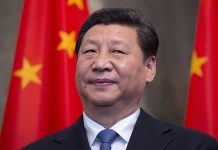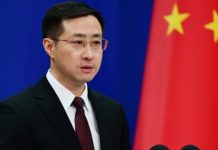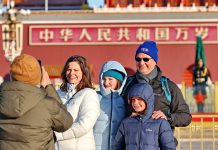Carrying taikonauts Zhai Zhigang, Wang Yaping and Ye Guangfu, the Shenzhou-13 manned spacecraft has successfully separated from the Tianhe space station core module by 0:44 am Saturday morning.
The three taikonauts have lived and worked in orbit for 183 days, the longest stay in space by Chinese astronauts in a single mission, the Global Times learned from the China Manned Space Agency (CMSA).
Prior to the separation, the taikonauts had completed various works, such as setting the status of the combination of the core module and cargo spacecraft, sorting and downloading experiment data, and clearing and transferring supplies kept in orbit, with support from staff on the ground, the CMSA said.
The crew is expected to land in the designated Dongfeng landing site in the Gobi Desert, North China’s Inner Mongolia Autonomous Region, in some eight hours after the separation.
The search and rescue teams at the Dongfeng landing site said they were already making preparations to receive the Shenzhou-13 crew. They have been carrying out tasks like closely monitoring weather conditions in the area and constructing systems for tracking and monitoring the flight of the spacecraft, read the latest posts by the Dongfeng site on its official WeChat public account.
“Please rest assured, the well-geared and effectively trained ground and air units would be there once the return capsule touches down,” the search and rescue teams said in one post.
Eyeing for frontier
Ahead of the Shenzhou-13’s return, the Xinhua News Agency reported on Thursday that Chinese President Xi Jinping, during an inspection tour on Tuesday in the Wenchang Space Launch Site located in South China’s Hainan Province, demanded efforts to upgrade the spacecraft launch site in the island province with world-leading standards.
Xi, also general secretary of the Communist Party of China Central Committee and chairman of the Central Military Commission, made the remarks at the Wenchang Spacecraft Launch Site. He extended his greetings to all the staff stationed at the site and asked them to shoulder their responsibility and be brave to innovate and make new breakthroughs.
After being briefed on the launch site, Xi inspected the launching tower and other facilities. He spoke highly of a series of key space missions launched from the site, including the launching of the space station core module Tianhe, the Chang’e-5 lunar mission, and the Tianwen-1 Mars probe.
Xi noted that Wenchang is the launch site of China’s new-generation high thrust carrier rockets and the bridgehead of the country’s deep-space exploration.
The launch site should continue to eye the frontier of global space development and the major strategic needs of China’s space industry, and comprehensively improve its modern space launch capabilities, said Xi.
Xi mentioned that Wenchang staff should carefully prepare, coordinate and implement the tasks to ensure the success of missions, and take practical actions to welcome the victory of the Party’s 20th National Congress.
As the youngest member of China’s spacecraft launch centers, the Wenchang spaceport successfully completed its first launch mission on June 25, 2016, with the maiden flight of China’s Long March-7 carrier rocket. On November 3, 2016, the Long March-5 also took its first flight from the launch site.
Staff at the Wenchang spaceport reached by the Global Times said they were greatly encouraged and inspired by the speech from the top leader and vowed to ensure the success of future missions and contribute their wisdom and strength to making China a space power. -The Daily Mail-Global Times News Exchange Item




